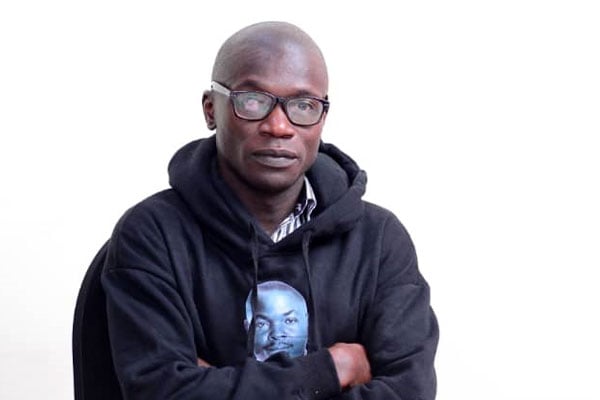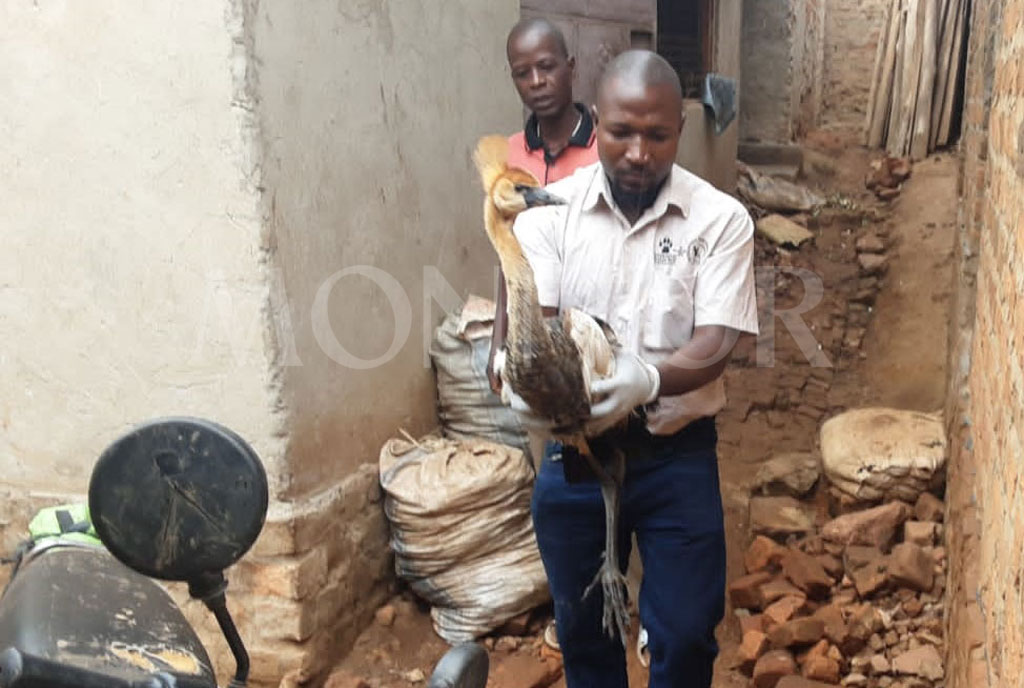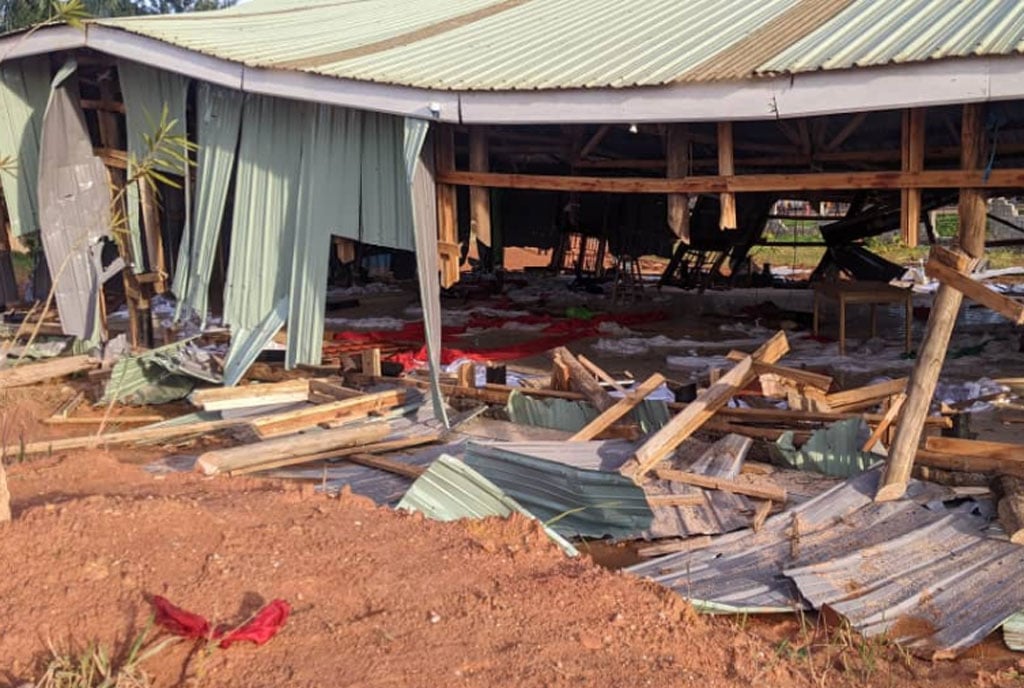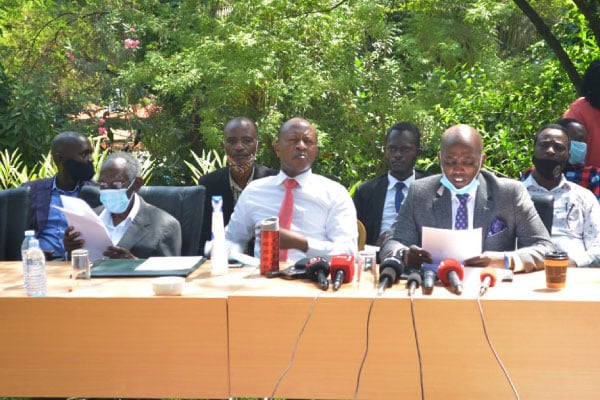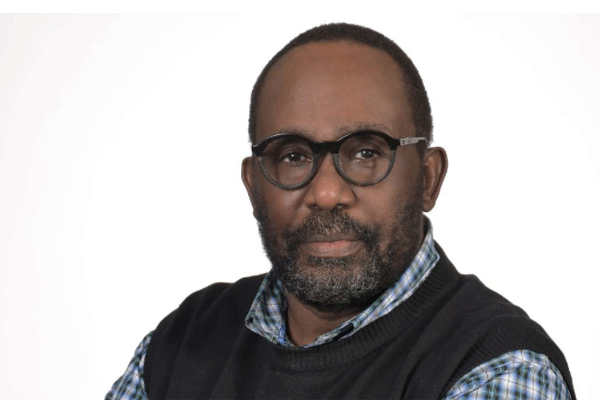Prime
Crimes of witchcraft: Why the AU is concerned
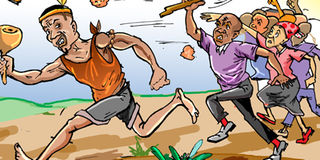
A mob attempts to lynch a suspected witch doctor. PHOTO | ILLUSTRATIONS | IVAN SENYONJO
What you need to know:
- Uganda’s witchcraft law has been on the statute books for 66 years now, following its introduction by the colonialists, who were dismissive of many of the African spiritual practices. Derrick Kiyonga writes that the African Parliament has asked African countries to revisit witchcraft laws to address the growing victimisation of people accused of the vice.
In 2018, a prosecution witness narrated before the Masindi High Court how suspicion of witchcraft led to the killing of his parent.
Charles Okumu, who stood in the witness dock as the second prosecution witness, told the court that in 2013, he had been picked by one Michael Oring to go to the Nyakyanika Trading Centre in Masindi District, where he found a gathering. Okumu said at the gathering, he found Bosco Mawa, the LC I chairperson, Oring, Emmanuel Obangi, and Sunday Adaku – all people he knew as village mates.
On arrival at the centre, Okumu said he saw his mother, Hellen Aromorach, and the mob accused him and his mother of witchcraft.
Soon after his arrival, Okumu said Oring accused his mother of bewitching Mawa’s son, who was said to be ill at the time.
Okumu testified that soon thereafter, someone received a telephone call that Mawa’s child had died and it was then that Obangi started assaulting the deceased on the head with a stick and was joined by Mawa, Oring, and Adaku, who all had sticks that they used to assault the deceased and himself.
More evidence
Okumu further testified that he was assaulted by the accused persons while both he and his mother were on the ground, where they had been forced to sit by the accused persons. At this point, Okumu said Mawa, who had sensed danger, asked to take the witness and the deceased to the police.
As they moved, Okumu said, the assault continued, he got frightened and managed to escape through a maize garden as he and his mother were being escorted by police.
Okumu later learnt his mother had died.
All the accused denied participation in the death of the deceased, with Mawa testifying that his child fell ill on December 8, 2013.
It was Mawa’s evidence that his child had met Okumu in the forest where Okumu told the child that he [Okumu] does not want to meet children and warned the child ‘you will see’. According to Mawa, when the child reached home, he fell ill and on taking the child to the hospital, doctors failed to diagnose the illness.
Mawa’s evidence is that he reported the situation to the LC1 chairperson, who reportedly called Okumu for discussions but before the discussions commenced, Mawa received a report that the child had died, which led him [Mawa] to become unconscious and not know what followed.
Oring’s evidence was similar to that of Mawa, but that of Obangi was quite telling.

A mob burns belongings of a suspected witchdoctor accused of murder in Oyam District in 2017. PHOTO | FILE.
He said he had gone to work when he got information that there would be a meeting to discuss suspected witches in the area.
On joining the meeting, he found Aromorach, the deceased, and Okumu, as well as Oring and Mawa. Obangi testified that the meeting was chaired by the LC1 chairperson.
It was Obangi’s evidence the mob that had gathered wanted Aromorach to answer for the child’s sickness as she had relocated from village to village because of alleged witchcraft tendencies.
Obangi said soon after his arrival, news came in that the child had died, and that’s when the mob became rowdy and family members of the child began beating the deceased but Okumu escaped, although he too was to be beaten by the mob.
In the end, Justice Henrietta Wolayo sentenced Mawa, Obangi, and Adaku to 20 years in prison, having found them guilty of murder, whilst Oring got off lightly with the judge finding him guilty of incitement and he was sentenced to community service of 75 hours at the nearest health centre to his place of residence.
“The retrogressive culture of mob violence is an aggravating factor that must be condemned. No one has the right to judge another person a witch so that she can be a candidate for mob violence. If a person is suspected of being a witch, the police are there to carry out the necessary investigations,” Justice Wolayo concluded.
What is witchcraft?
With the increase in such incidents, the pan- African Parliament, a couple of weeks ago, forged new guidelines it says will help stem the harm and abuse experienced by people accused of witchcraft, and the victims of ritual attacks.
The term witchcraft, according to the pan- African parliament, which is the legislative arm of the African Union, was introduced to the African continent by European explorers, colonialists, and missionaries in reference to an array of African indigenous beliefs and practices.
Indeed, Uganda’s Witchcraft Act was introduced in 1957, when Uganda was still under British colonial rule.
The Act tries to clarify what would amount to witchcraft, saying “witchcraft” does not include bona fide spirit worship or the bona fide manufacture, supply, or sale of native medicines.
Section 2 of the Witchcraft Act stipulates that any person who directly or indirectly threatens another with death by witchcraft or by any other supernatural means commits an offence and is liable on conviction to imprisonment for life; Any person who directly or indirectly threatens to cause disease or any physical harm to another, or to cause disease or harm to any livestock or harm to any property of whatever sort or another by witchcraft or by any other supernatural means commits an offence and is liable on conviction to imprisonment for a period not exceeding 10 years; Any person who practises witchcraft or who holds himself or herself out as a witch, whether on one or more occasions, commits an offence and is liable on conviction to imprisonment for a period not exceeding five years; Any person who hires or procures another person to practise witchcraft or who, for evil purposes, consults or consorts with another who practises witchcraft or holds himself or herself out as a witch, commits an offence and is liable on conviction to imprisonment for a period not exceeding five years.
The Supreme Court presented a chance to nullify the Witchcraft Act when Salvatori Abuki and Richard Obuga, who died in prison while serving his sentence, filed a petition challenging their convictions under the Witchcraft Act.
The dual was tried separately at the Grade II Magistrate’s Court of Aduku in Lira District, where Abuki was charged in one count with practicing witchcraft on Albatina Agol. He was convicted and sentenced to 22 months in prison. In addition, he was banished from his home for 10 years after serving the sentence of imprisonment. Obuga was convicted of being in possession of materials used for witchcraft.

An illustration of a witchdoctor going about his business in a shrine.
In the end, the Supreme Court held that banishing Abuki from the community under Section 7 of the Witchcraft Act was wrong, torturous, cruel, inhuman, and degrading treatment or punishment and accordingly in contravention of articles 24 and 44 (a) of the Constitution, but they ordered him to serve his jail term after finding that offenses relating to witchcraft are sufficiently defined in Sections 2 and 3 of the Act.
Belief in witchcraft still strong
Despite the law largely remaining intact, witchcraft is still widely practiced in Uganda, with many purportedly using it to even swing justice in their favour.
For instance, in 2016, Issa Kiwanuka was nabbed red-handed by cleaners at Buganda Road Court, in Kampala, sprinkling fetishes (powder-like substances) on the seat of the chief magistrate.
Upon interrogation, Kiwanuka, who was charged with criminal trespass, said since he was a renowned witchdoctor and he had been hired by Alice Nalule to cast a spell on the seat of the chief magistrate and that of the state prosecutors with the intention of causing them to release her husband Zacchaeus Ssekiziyivu, who was in jail on over 100 charges of obtaining money by false pretence.
Later, through a plea-bargaining process, Kiwanuka admitted the charge of criminal trespass and was sentenced to community service.
African Union guides
To solve injustices brought about by witchcraft, the Pan- African Parliament has come up with proposals, including legal steps such as criminalising violent acts which result from accusations of witchcraft, as well as outlawing the trafficking of body parts used in rituals.
“Criminalise harmful practices related to accusations of witchcraft, including committing or causing to be committed physical attacks to person and property, forced displacement (banishment), forced confessions, and forced exorcisms of persons alleged to be witches,” the Pan African Parliament says.
The directives also introduce non-legal efforts such as community education and awareness campaigns to address misguided beliefs that perpetuate witchcraft accusations.
The Pan African Parliament directs member states to develop a comprehensive education and awareness-raising strategy, in collaboration with the media and civil society, targeted towards the general population that addresses erroneous beliefs that perpetuate “Harmful Practices Impacting Persons with Albinism” (HPAWR), and that highlights the human rights implications of HPAWR.
This would be aimed at addressing a widespread belief that the body parts of albinos and children possess (supernatural) qualities that can facilitate the acquisition of fortune or cure sickness, which leads to violent attacks and ritual killings.
These cases extend to ritual rape and grave desecration for the purpose of stealing and trafficking the remains of a targeted person, often including persons with albinism.
Improve law on Witchcraft
African Union also asks all its member states to update “colonial-era” laws that punish those who merely believe in or practice witchcraft to bring them in line with international human rights laws, including the right to freedom of thought, conscience, and religion, freedom of expression, and cultural rights.
“Ensure all stages of the legal and judicial processes are as accessible and transparent as possible, in order for potential complainants and victims to fully benefit from criminalisation efforts, including through ensuring appropriate and accessible legal aid schemes,” directs the Pan-African Parliament, headquartered in Johannesburg, South Africa.
The ills of witchcraft in Africa
In its new guidelines, the Pan- African Parliament says it has observed that accusations of witchcraft are often made during periods of misfortune, illness, or death, and are used as a means of interpreting that misfortune, apportioning blame, and seeking redress.
Victims of accusations of witchcraft in Africa, according to the Pan- African Parliament, are usually elder women, children living with disabilities, persons with albinism, and the elderly.
“For instance, more than 1,000 older women accused of being witches between 2004 and 2009, were reportedly banished to live in indecent conditions at ‘witch camps’ in northern Ghana, and for the same five-year period, more than 2,585 elderly women were accused of witchcraft and killed in Tanzania,” the Pan African Parliament says.
“There are also increasing reports of accusations of witchcraft made against children, including those with disabilities, who are often deemed to carry ‘bad luck’, which they can spread to others.
Ritual attacks are fuelled by the belief that the efficacy of charms and potions in bringing about wealth and good fortune is significantly enhanced when constituted with body parts (tissue and/or fluid) of a person believed to have a highly valued quality, such as the innocence of children, or a relatively rare quality such as persons with albinism.”
